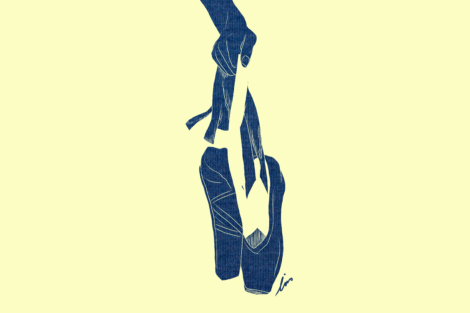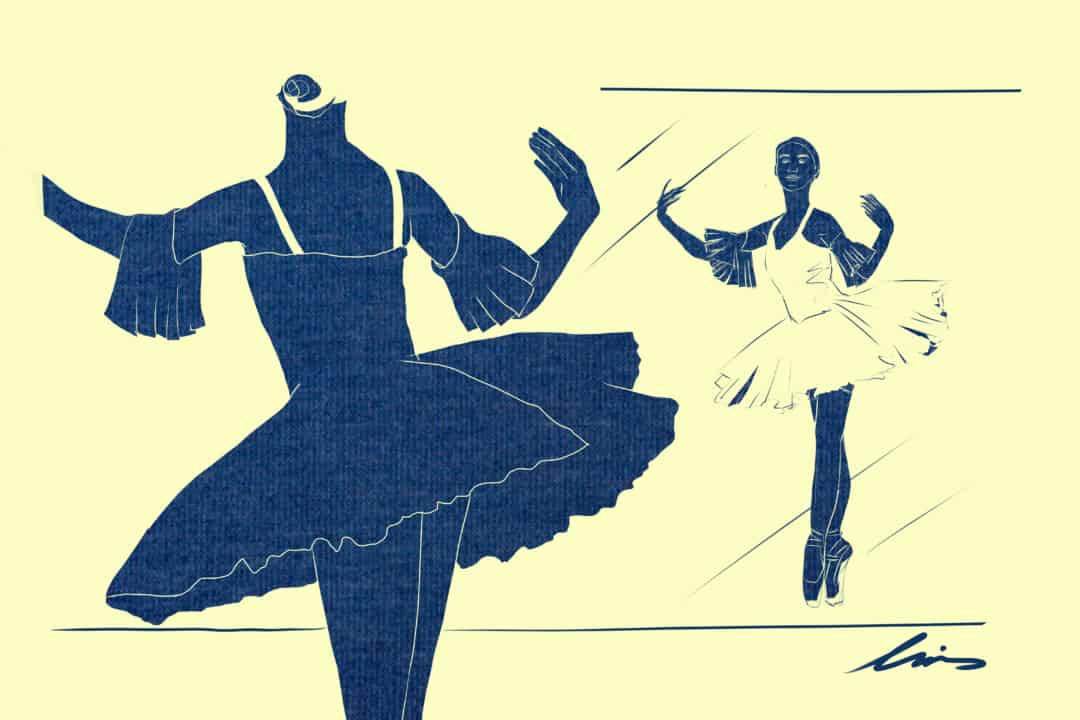As the school year ends, after weeks of gruesome tests and exams, I always feel a rush of relief. But this summertime rush isn’t just the anticipation of fun and freedom. For me, it’s intermixed with intense personal scrutiny and anxiety. Thoughts and plans of travelling, relaxing with friends, or even taking a dip at the beach are easily undermined by my body dysmorphia.
The warm weather serves as a constant reminder that I must continue to surveil my physical appearance and keep my food consumption under control. As a dancer and highly athletic individual, this dysmorphic self-perception has haunted my life for years. Although I have now learned to better respect and appreciate my physicality, overcoming body dysmorphia hasn’t been easy.
Ballet has been one of the most important parts of my life since grade school. As years passed, I spent countless hours in the dance studio, training and practicing each required movement on the ballet syllabus. I spent years standing in front of towering studio mirrors; I couldn’t help but scrutinize every physical detail of myself.
As time progressed, I began to develop an unhealthy fixation. I obsessed over the width of my arms and waistline, constantly monitoring my weight. I kept mental images of other dancers’ bodies as a reminder of the physical ideal I wanted to achieve.
These unhealthy fixations took control over my life. For years, I had developed a daily habit of waking up and heading straight to my mirror to analyze my body, seeking to identify even the slightest change of body weight or muscle tone. I would grip my arms and pinch them, visualizing arms far skinnier than the average healthy weight at my age.
This physical fixation poured into every part of my life. I was constantly comparing and watching everything my friends ate, mentally keeping track of each food item I consumed, and even believing that those who gave me any dessert portion were plotting to get me fat.
The narrow physical ideal I had ingrained within me, alongside the pressure of “looking good” for the summer, led me to cut out a variety of important types of food essential to maintaining a healthy body. Meat was practically non-existent in my diet for years, and its absence created further unhealthy effects from my pre-existing anemia. These restrictions led to a series of health issues that may have caused severe repercussions had I not learned to better accept and embrace my body.

IRIS DENG/THE VARSITY
Thankfully, it has been years since my severe obsession over my body image was at its peak. As time passed, I learned how to deal with internal scrutiny better and I have learned how to shut out the voice inside my head suggesting I am not enough. Throughout my personal journey of learning to love my body, several things helped keep me on track.
For one, I realized my body is worth much, much more than solely its physical appearance. Every day we are confronted with images and advertisements presenting ideas that suggest the aesthetic appearance of our bodies is the most important quality about them. We put so much emphasis on the body’s surface: paying enormous amounts of attention to the glow of our skin, the thinness of our waistline, and the bulkiness of our muscles. However, our bodies are so much more than their external appearances.
Paying attention to how you feel about your body during certain activities is key. Instead of spending time scrutinizing my perceived physical flaws, I instead encouraged myself to discover activities that made me feel best with my physical self. Focusing on activities and hobbies that emphasize how great you feel, rather than look, is a vital step forward.
The media has powerful control over our perception of self and body image. Mass media has confronted us with billboards, advertisements, and magazines depicting extremely narrow ideals of beauty that are unrealistic and harmful to one’s self-esteem.
Images presented to us through the media have been modified in ways tailored to suit a company’s commercial interests: models and actors staged in advertisements aim to sell the desire to achieve a certain look through purchasing the company’s products. In images, women and men alike have had their bodies photoshopped, faces and skin airbrushed, and are accompanied by a team of stylists and makeup artists. These images persuade us to achieve looks that are unrealistic.
Comparing yourself negatively to others will only contribute to your unhappiness. I know it is difficult to acknowledge this and change your mindset; it can be hard when we are confronted with images of the same stereotypes and beauty ideals. However, these comparisons are extremely detrimental to our self-esteem.
Comparing our looks and physicality to others is simply a cry of self-hatred; there will always be someone in our eyes that looks more physically fit, more curvy, or more skinny. That does not mean our own body is worth anything less; by comparing ourselves to others, we don’t acknowledge the beauty of our own bodies and all of the amazing things they are capable of. We are all unique in many ways and should take pride in what our own physicality has to offer.
As temperatures rise and warm weather sets in, I encourage those struggling with body dysmorphia not to beat yourself up over the numbers you see on the scale, not to worry about the extra ice-cream cone you want to consume, and to wear that top you think looks good on you. Summer is a time where one should experience life fully and enjoy every moment possible; try not to let negative thoughts towards your body prevent you from these wonderful experiences.


